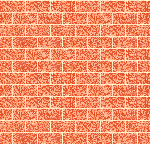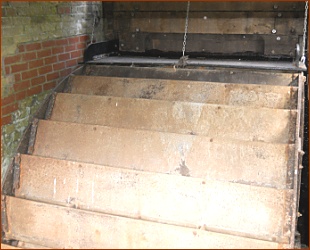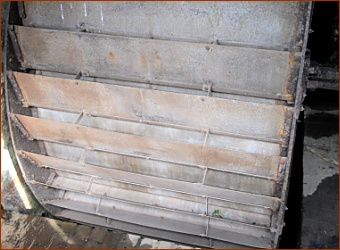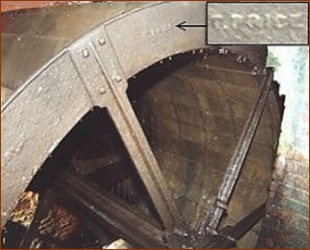 |
||||
 |
Waterwheel | |||
 |
 |
 |
||
|
In a watermill, the waterwheel is the primary source
of power to operate the mill. Without a wheel, and an adequate supply of
water, a watermill cannot work. Although the mill pond still survives,
New Hall Mill lost the water supply The wheel is an external overshot wheel, 11ft (3.35m)
in diameter and 6ft (1.83m) wide, fitted with 36 buckets supported by
two sets of six cast iron arms on an 8" iron shaft. The name
"T. Price" is cast into the shrouds but it is believed the
wheel was made by George Turton of Kidderminster, most likely in the
1870's or 1880's. The bucket risers and sole boards were originally
wooden but with the last miller rarely recycling the water in the
collecting tank back to the mill pond, those at the bottom of the wheel
remained in the water leading to them becoming waterlogged and rotten
and |
||||